"Building Trust and Strengthening Relationships in the Workplace"
Leadership today is no longer about hierarchy and authority. The ability to influence, build trust, and foster collaboration — across teams, departments, and even organizational boundaries — has become the hallmark of successful leaders. But how can leaders, without formal authority, make this shift from transactional to relational influence?

This blog explores how leaders can expand their sphere of influence, design communication for collaborative learning, and build trust to foster sustainable, impactful solutions that benefit everyone involved at the end, you’ll walk away with actionable strategies to strengthen relationships, enhance collaboration, and lead with influence in even the most complex environments.
Key Focus
Our goal here is to equip you with the mindset and tools to foster sustainable collaboration and build commitment across organizational boundaries.
From Transactions to Relationships
Many leaders’ default to a transactional approach when seeking to get work done. A transactional style focuses on exchanges—"If you give me X, I’ll provide Y." While this can yield short-term results, it rarely fosters collaboration or long-term trust.
Relational influence, on the other hand, seeks to develop genuine connections with stakeholders. Focusing on shared goals and mutual understanding builds trust and creates a foundation for collaborative success.
Here’s how to begin shifting your mindset from transactions to relationships as a leader:
- Cultivate Authentic Connections – Instead of approaching people with an agenda, take the time to genuinely understand them. Ask open-ended questions about their perspectives, challenges, and goals.
- Focus on Shared Goals – Align your message with broader mutual objectives rather than emphasizing isolated outcomes. For example, instead of saying, “We need your input for our project,” try, “I think your expertise will be pivotal in helping us achieve X together.”
- Demonstrate Emotional Credibility – Display honesty, openness, and empathy in your interactions. People are more likely to trust leaders who communicate transparently and prioritize relationships over immediate gains.
Expanding Your Sphere of Influence
To truly foster collaboration, you must broaden your sphere of influence. This doesn’t mean simply networking with as many people as possible — it’s about forging meaningful connections that enable collective problem-solving.
Practical Steps to Expand Influence
- Diversify Your Connections – Look beyond your immediate teams and departments. Reach out to individuals with different viewpoints, experiences, and expertise. This diversity will provide new perspectives and expand the resources available to your team.
- Be Proactive, Not Reactive – Don’t wait for opportunities to collaborate — create them. Host cross-functional brainstorming sessions, organize informal meetups, or champion initiatives that bring diverse stakeholders together.
- Reciprocate Generously – Influence is a two-way street. Offer your expertise, assistance, or insights without expecting anything in return. This will establish you as a dependable partner and strengthen your relationships over time.
Think of influence like planting seeds. Some relationships will grow quickly, while others will take time to flourish. But with consistent attention, and effort, your network’s strength, and reach will increase — along with your ability to lead effectively.
Communicating to Facilitate Learning
One of the most critical aspects of collaborative leadership is effective communication. However, many leaders fall into the trap of communicating solely to persuade others. While persuasion can be valuable, designing communication to facilitate learning creates dialogue, encourages idea-sharing, and builds collective commitment.
Strategies to Communicate for Learning
- Shift to Learner Mode – Approach conversations from a position of curiosity. Instead of trying to prove your point, aim to learn from others’ perspectives. Ask open-ended questions like, “What do you think?” or “How would you approach this problem?”
- Avoid Assumptions – Enter discussions with the mindset that you don’t have all the answers. Be willing to change your stance based on new insights from your team or stakeholders.
- Operate with Reciprocity – Encourage collaboration by extending trust and recognizing others’ contributions. Show appreciation for their input and emphasize how their involvement strengthens the overall outcome.
For example, imagine you’re navigating a conflict during a team project. Instead of saying, “Here’s the solution we need to implement,” try, “I’d love to hear how you’re seeing this challenge. Can we brainstorm a way forward together?” This approach not only fosters collaboration but also boosts morale and commitment.
Building Trust for Sustainable Collaboration
Trust is the bedrock of any successful relationship. Without it, collaboration feels forced, progress stalls, and stakeholders disengage. Leaders who prioritize building trust within their teams and across organizations gain the credibility needed to inspire and mobilize others.
Components of Building Trust
- Consistency – Deliver on your promises, meet deadlines, and follow through on your commitments. Every fulfilled promise reinforces your credibility.
- Transparency – Keep communication open and honest. Share key updates — even when they’re difficult or uncomfortable — to ensure everyone is on the same page.
- Empathy – Take time to understand others’ challenges and motivations. People are more likely to trust leaders who genuinely care about their well-being.
- Mutual Respect – Trust isn’t a one-way street. Show respect for others’ expertise, time, and insights to foster an environment of mutual admiration and accountability.
Stephen M.R. Covey’s “Speed of Trust” framework offers great insight into behaviors that build trust, including talking straight, demonstrating respect, creating transparency, showing loyalty, and extending trust. Apply these behaviors consistently to establish your own foundation of trust.
Putting It All Together
Influencing collaborative solutions as a leader isn’t about wielding power — it’s about mobilizing people, ideas, and resources toward shared goals. Shifting from transactional to relational influence, expanding your connections, communicating to learn, and building trust, you'll cultivate an environment where sustainable collaboration thrives.
Are you ready to take the next step in becoming an influential leader? The Duke CE Advanced Leadership Program is designed to help to aspire leaders like you master these skills and more. Learn how to foster collaboration, build trust, and create impactful change within your organization.
Contact us today to enroll and start building your leadership legacy!
Coming Next month: Part 4: Elevate Your Team's Impact - How Strong Team Dynamics Drives Business Success
Previously: Part 2: Navigate Complexity - How to Lead With Clarity in Times of Uncertainty


